Mambo at The Museo ni Magsaysay

MANILA, Philippines — When Clang Garcia, publisher of the “Philippine Travel Guide: 25 Perfect Weekends” and our guide for our Zambales day tour of faith, heritage, farm, music and food, announced the first stop would be Museo ni Ramon Magsaysay, our group of less than a dozen day trippers spontaneously burst into a song – in unison and in tune – with the enthusiasm of a student pep rally, the jingle of Ramon Magsaysay during the presidential campaign in 1953:
Mambo, Mambo Magsaysay
Mabu, Mabu- Mabuhay!
Our democracy will die
Kung wala si Magsaysay!
Amidst hearty laughter, we teased each other on how well we remembered the lyrics and wondered where the years have gone.
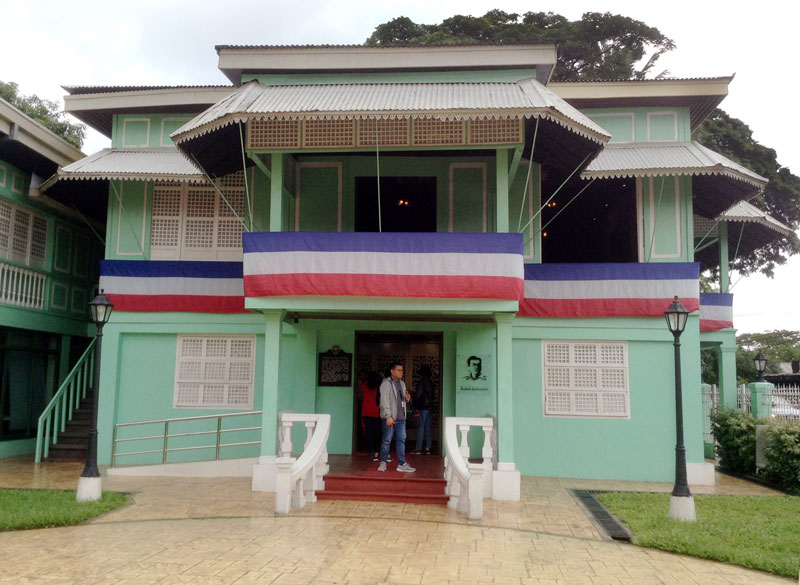 The teal-colored façade of the ancestral home turned museum
The teal-colored façade of the ancestral home turned museumLocated by the National Highway corner Sixto Cacho Street in Barangay Santa Maria in Castillejos, Zambales, on a 1813-square meter lot sits the ancestral home of parents Exequiel and Perfecta Magsaysay. Reconstructed in 1999 by local architects for the protection and safety of all guests and visitors, it is today under the care of the National Historical Commission of the Philippines (NHCP).
We were met by Noel Gaton, Shrine Curator II, a BA History graduate from the Polytechnic University of the Philippines, a two-year course degree holder from the Tenuel School of Theology and a former guide at the Jose Rizal section of Fort Santiago, who eagerly shared his expertise.
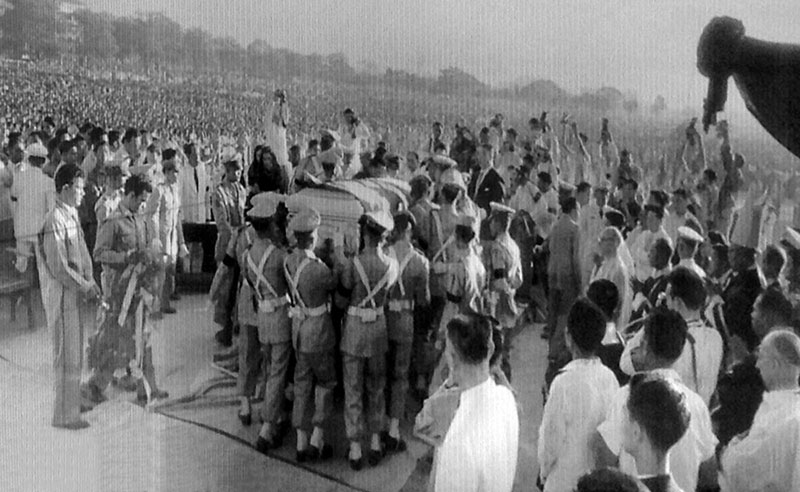 Touching photos taken during Magsaysay’s funeral
Touching photos taken during Magsaysay’s funeralPassing by the marker from the NHCP, we entered the Vigan-tiled, carpeted two-story aqua green building and watched a brief introductory video – a short primer on the highlights of the life of the Philippines’ seventh president, Ramon Magsaysay.
Three panels showcased the different periods in his life: his youth, as a worker and as a guerrilla fighter.
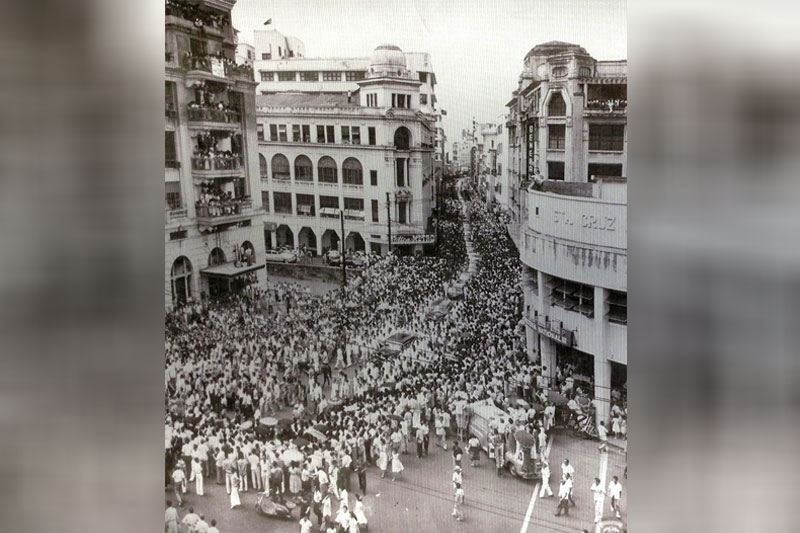
He attended the local elementary school in Castillejos and completed high school at the Zambales Academy in San Narciso.
A self-taught mechanic, he initially took up Mechanical Engineering at the University of the Philippines, but needed to return to his hometown due to an illness. He graduated from the Jose Rizal College in Manila with a Bachelor of Arts in Commerce diploma.
He joined Try-V Trans as a mechanic and was eventually promoted to shop superintendent. At 23, he fell in love at first sight with Luz Banzon, who was 15 years old. After a traditional three-year courtship, they got married.
 His Air Force uniform as well as a simple barong and locally-made shoes
His Air Force uniform as well as a simple barong and locally-made shoesAs part of the resistance, on display was his personal .45 caliber pistol, which he used as he ambushed Japanese intelligence officers in the mountains of Zambales. Nearby were several pins which revealed his rank as a Captian of the US Army and his eventual honourable discharge as Major.
We marvelled at his table donated by his only son and namesake, former senator Ramon Magsaysay Jr., when his father was the secretary of defense.
A believer of constant and continuous dialogue and peaceful and cordial negotiations despite skirmishes in Laguna and other areas, he provided opportunities for rebels to be reintegrated into the mainstream.
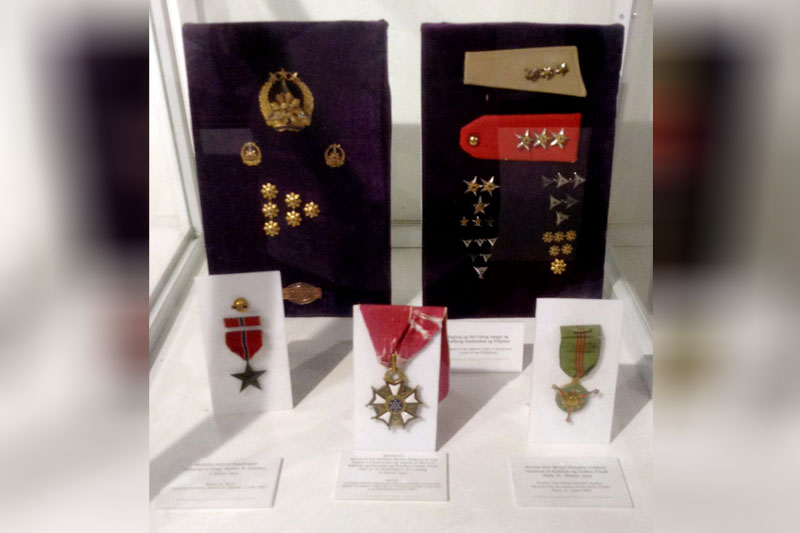 military pins
military pinsHe is credited for subduing the insurgency of the Huks, which earned him three medals – two from the United States of America and one from the Republic of the Philippines – and the cover of TIME magazine, and the appreciation, admiration and gratitude of the entire Filipino population.
In one corner was a transistor radio – the number one form of information dissemination and source of entertainment back then – beside an LP – long-play record – with his trademark campaign jingle, plus framed decals of his slogan Magsaysay Is My Guy.
There was likewise a showcase of his simple barong, and brown and white shoes -- large, for he stood at 5 feet 11 inches, with size 8 feet.
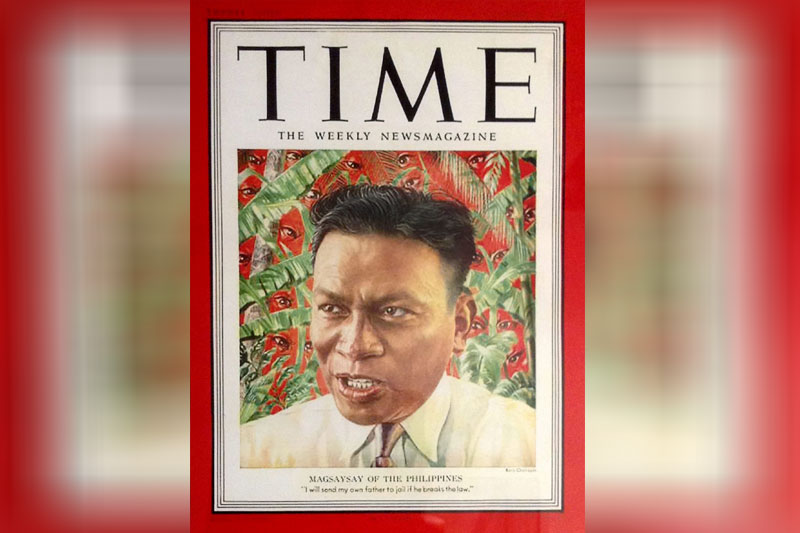 The cover of TIME magazine featuring the then secretary of defense
The cover of TIME magazine featuring the then secretary of defenseA silent witness to the clan’s carpentry and foundry business was an original rowing engine and a plough from their workshop.
Without a doubt, the most popular piece in the museum was the replica of his presidential table, plus his original nameplate, complete with a digital information tablet. Beside was a silver pen, with its engraved name case, to sign presidential decrees and other documents of importance during his tenure at Malacañang.
On another desk were pictures of him with historical figures such as president Emilio Aguinaldo, US president Richard Nixon and vice president Carlos P. Garcia. We were awed by the thick folder of telegram messages between the country’s CEO and diplomat, statesman, soldier, journalist and author Carlos P. Romulo, then Philippine ambassador to the US.
The man of the masses received many other accolades, some of which on display were the Order of the White Elephant from Thailand, the Order of Saint George by the Most Exalted Order of George from Greece, and even a Guest of Honor Medallion at the Leader of the Year Awards from the Philippine Youth League.
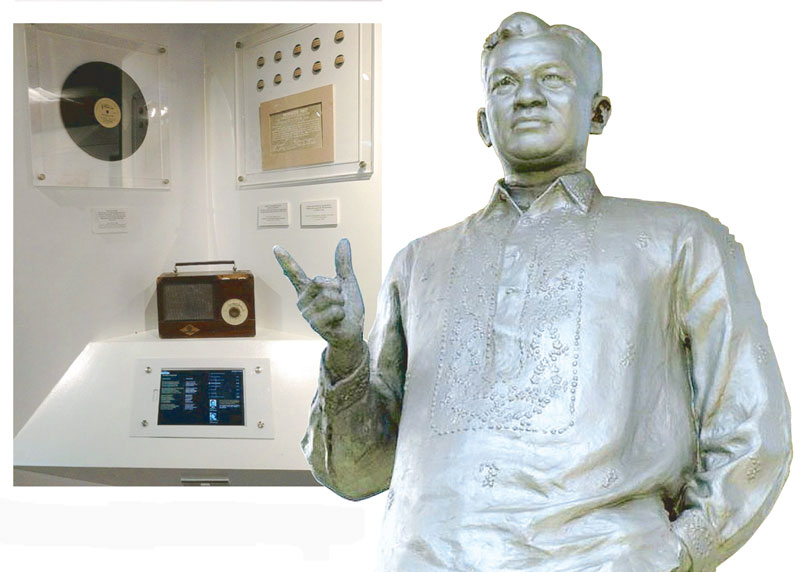 a transistor radio and a long play record containing Magsaysay’s campaign jingle
a transistor radio and a long play record containing Magsaysay’s campaign jingleThe sala on the second floor, with spartan furniture and fixtures, was dominated by a plaster of paris and fiberglass sculpture of the Magsaysay couple with their three children Teresita, Milagros and Ramon Jr. in their youth by Sajid Imao, son of National Artist Abdul Imao.
On its walls hung various paintings: a portrait of the late leader with rolled-up sleeves capturing his down-to-earth nature, by Isabel Echevarria Rocha; a breathtaking painting of the former first lady done by Norberto Reyes; and their daughter Milagros, by P. Gregorio. A wooden bust sculpted by Juanito Aliño keeps watch.
We likewise spotted four old school phonographs, which hinted at his love for music.
Adjacent was a recreation of the simple and austere family dining table with plates and cutlery from the era.
Described as a modest guy, his personal private quarters contained his original, no-frills bed, donated by the Intramuros Administration. In his cabinet hung his clothes – a choice collection of polo shirts and jodhpur pants, the preferred choice for horseback riding enthusiasts such as himself.
We crossed to the extended section of the house which recounted and commemorated his untimely death at Mount Manunggal in Cebu as the nation wept and mourned.
His tragic air crash, along with the assassinations of John F. Kennedy in 1963 and Ninoy Aquino in 1983 – the tragic ends of three promising leaders that touched the hearts of millions – were some of the “Where were you when…” moments I will always remember.
A clipping of an article by Teodoro Locsin traces the passing of Magsaysay, the huge funeral procession turnout, ending with the life of his widow in retirement with the three children. A copy of the cover of LIFE magazine featured the grieving wife and the devastated mother Perfecta.
Another series of images portrayed Magsaysay with the farmers and fisherfolk and depicted him as the extremely hands-on man he really was.
Among his many legacies – too many to mention – one of the most notable was the enactment of the Social Security Act which established the Social Security System.
There is ceaseless momentum to honor the late president by an ever-expanding list of places, institutions and buildings named after him, which includes the Ramon Magsaysay Technological University, the Magsaysay High School and the Ramon Magsaysay Medical Center.
Probably the most popular president our country has had, Ramon Magsaysay is a star so rare, that he continues to live to this day through his noble deeds.
- Latest
- Trending


















